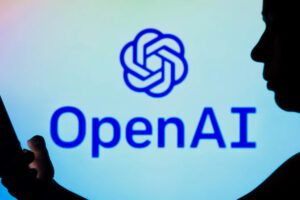Introduction:
ChatGPT, an advanced language model powered by the GPT-3.5 architecture, has captivated users with its ability to generate human-like responses. But how does ChatGPT actually work? In this article, we delve into the mechanics behind this sophisticated model, exploring its training process, architecture, and limitations.
Understanding Language Modeling:
1. Language models and their purpose
1. Predictive nature of language modeling
3. Training data and its importance
The Transformer Architecture:
1. Introduction to the transformer architecture
2. Self-attention mechanisms and their role
3. Capturing contextual relationships in text
4. GPT-3.5: An overview of the underlying architecture
Training ChatGPT:
1. Massive-scale training on internet text data
2. Predicting the next word: Learning patterns and relationships
3. Incorporating grammar, syntax, and factual information
4. Continuous training and updates
Interacting with ChatGPT:
1. Prompt-based interactions
2. Context understanding and response generation
3. Phrasing sensitivity and varied responses
Limitations and Considerations:
1. Lack of real understanding and knowledge
2. Potential for incorrect or nonsensical responses
3. Sensitivity to prompt phrasing
4. Knowledge cutoff and post-cutoff information
Certainly! Here’s a breakdown of the working process of ChatGPT with headings:
Language Model:
- ChatGPT is built on a deep learning model known as a transformer neural network.
- It has been trained on a large amount of text data from the internet, including books, articles, websites, and more.
- The training process involves learning the statistical patterns and relationships between words and sentences.
Input Processing:
- When you provide a prompt or a message to ChatGPT, it preprocesses the text to prepare it for the model.
- The input text is tokenized, breaking it down into smaller units like words or subwords.
- The tokens are then encoded as numerical representations, making them understandable to the model.
- Context and Comprehension:
- ChatGPT analyzes the input text in the context of the ongoing conversation or prompt.
- It tries to understand the meaning and intent behind the message by identifying patterns, relationships, and contextual cues.
- The model leverages its training to comprehend the input and generate meaningful responses.
Response Generation:
- Based on the input and learned patterns, ChatGPT generates a response.
- It predicts the most likely next word or sequence of words to follow the input, considering the context and desired conversational flow.
- The response is generated word by word, often with consideration given to a fixed-length window of previous tokens to maintain coherence.
Sampling and Ranking:
- The model generates multiple potential completions for the response and assigns probabilities to each option.
- These probabilities help in determining the most likely and coherent response.
- Sampling techniques like “top-p” or “nucleus sampling” may be employed to introduce randomness and generate diverse responses.
Output Decoding:
- The numerical representation of the generated response is converted back into human-readable text.
- This involves decoding the tokens, reconstructing the words and sentences, and applying any necessary post-processing steps to refine the final response.
It’s important to note that while ChatGPT has extensive training, it may not always have up-to-date information or contextual awareness beyond its knowledge cutoff date. Therefore, it’s advisable to verify critical or time-sensitive information from reliable sources.
Conclusion:
ChatGPT operates as a powerful language model based on the transformer architecture. Its training on vast amounts of text data enables it to generate human-like responses by leveraging learned patterns and relationships. While ChatGPT offers impressive capabilities, it is important to be mindful of its limitations, including its lack of genuine understanding and potential for errors. As the model evolves and new iterations emerge, we can expect continued advancements in the realm of conversational AI.
I Asked ChatGPT What Kind of Business One Can Build With ChatGPT API



